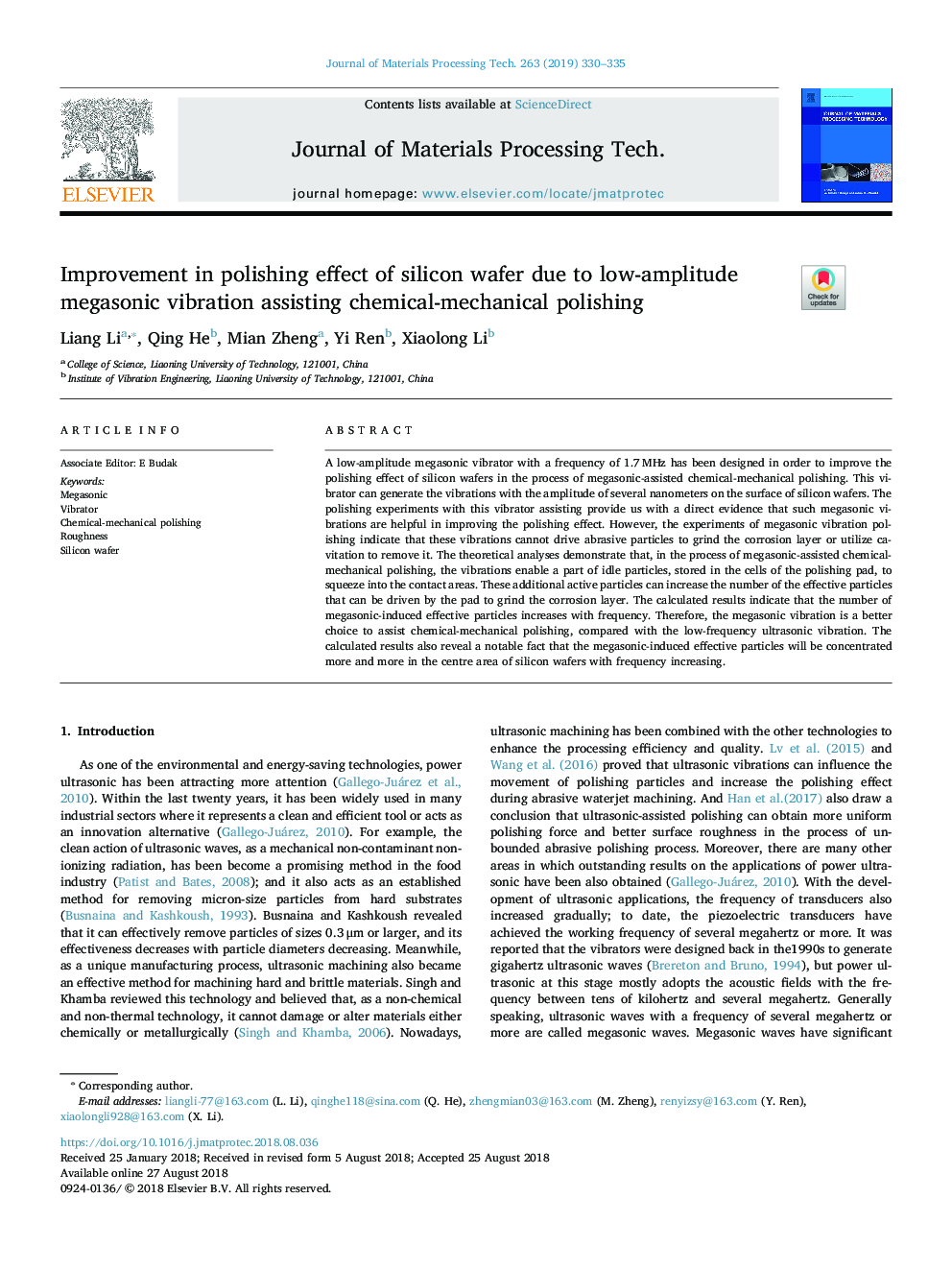| Article ID | Journal | Published Year | Pages | File Type |
|---|---|---|---|---|
| 11004028 | Journal of Materials Processing Technology | 2019 | 6 Pages |
Abstract
A low-amplitude megasonic vibrator with a frequency of 1.7âMHz has been designed in order to improve the polishing effect of silicon wafers in the process of megasonic-assisted chemical-mechanical polishing. This vibrator can generate the vibrations with the amplitude of several nanometers on the surface of silicon wafers. The polishing experiments with this vibrator assisting provide us with a direct evidence that such megasonic vibrations are helpful in improving the polishing effect. However, the experiments of megasonic vibration polishing indicate that these vibrations cannot drive abrasive particles to grind the corrosion layer or utilize cavitation to remove it. The theoretical analyses demonstrate that, in the process of megasonic-assisted chemical-mechanical polishing, the vibrations enable a part of idle particles, stored in the cells of the polishing pad, to squeeze into the contact areas. These additional active particles can increase the number of the effective particles that can be driven by the pad to grind the corrosion layer. The calculated results indicate that the number of megasonic-induced effective particles increases with frequency. Therefore, the megasonic vibration is a better choice to assist chemical-mechanical polishing, compared with the low-frequency ultrasonic vibration. The calculated results also reveal a notable fact that the megasonic-induced effective particles will be concentrated more and more in the centre area of silicon wafers with frequency increasing.
Related Topics
Physical Sciences and Engineering
Engineering
Industrial and Manufacturing Engineering
Authors
Liang Li, Qing He, Mian Zheng, Yi Ren, Xiaolong Li,
